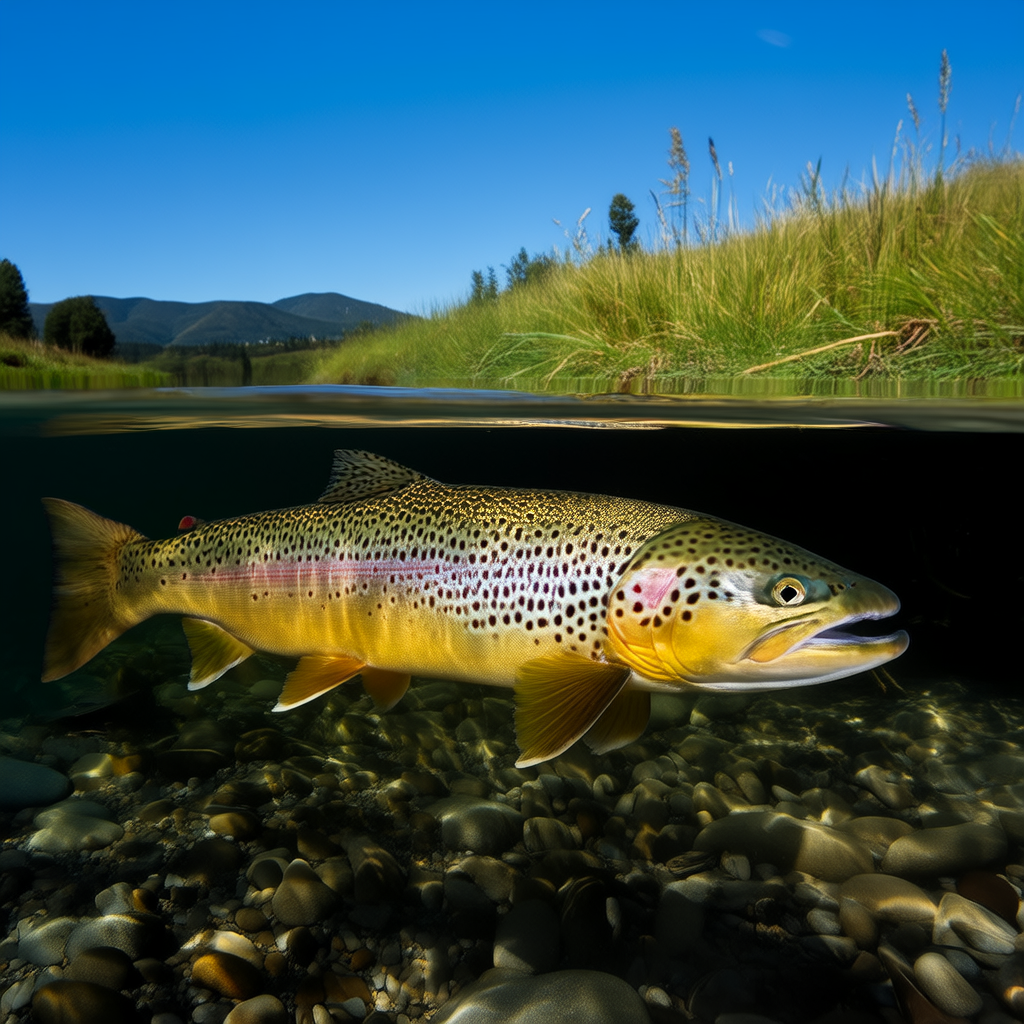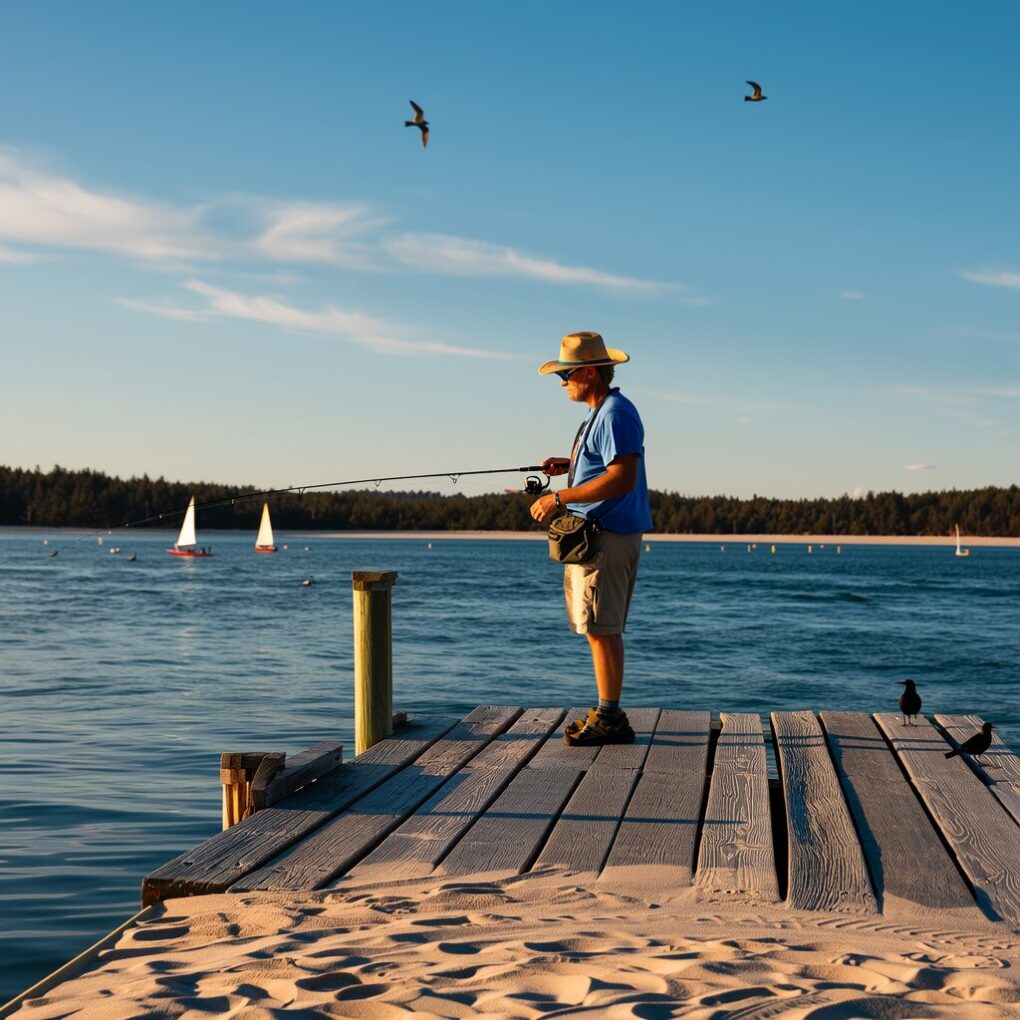Madison River Brown Trout: A Comprehensive Guide
The Madison River brown trout has long been a subject of fascination for anglers, ecologists, and nature enthusiasts alike. Nestled within the pristine waters of Montana’s famed Madison River, these fish represent an intricate balance between natural adaptation and human interaction. This article delves into the world of Madison River brown trout, exploring their unique characteristics, preferred habitats, and the challenges they face in today’s ever-changing environment.
Introduction to Madison River Brown Trout
Historical Background
The introduction of brown trout (Salmo trutta) to the Madison River dates back to the late 19th century. Originally native to Europe and parts of Asia, this species was transplanted to North America to enhance recreational fishing opportunities. Over time, the Madison River became one of the most renowned destinations for catching robust brown trout, drawing anglers from all corners of the globe.
Physical Characteristics
Madison River brown trout are distinguished by their sleek bodies and vibrant coloration. Typically ranging from golden-yellow to olive-green hues, these fish exhibit dark spots along their flanks and fins, which serve as camouflage against predators. Adult specimens often reach lengths exceeding 20 inches, with some trophy-sized individuals weighing over 10 pounds.
Unique Traits
One remarkable trait of Madison River brown trout is their adaptability. Unlike many other species confined to specific water conditions, these trout thrive in both cold mountain streams and warmer lower reaches of the river. Their ability to adjust to varying temperatures and food sources makes them exceptionally resilient.
Habitat Preferences
River Dynamics
The Madison River provides an ideal environment for brown trout due to its diverse flow patterns and abundant aquatic life. From its headwaters at Quake Lake to its confluence with the Missouri River, the Madison offers a gradient of habitats that cater to different stages of the trout’s lifecycle. Upper sections feature swift currents and rocky substrates, while lower portions boast slower-moving pools rich in nutrients.
Seasonal Movements
Madison River brown trout exhibit seasonal migration patterns influenced by spawning cycles and temperature changes. During spring and fall, they move upstream toward gravel beds where they lay eggs. In summer, they gravitate toward shaded areas or deeper pools to escape heat. Winter sees them retreating to slower-flowing sections where energy expenditure is minimized.
Shelter and Cover
Cover plays a critical role in the survival of Madison River brown trout. Boulders, logs, and undercut banks provide refuge from predators and strong currents. These structures also create feeding lanes where insects and smaller fish accumulate, making it easier for trout to ambush prey.
Fishing Techniques for Madison River Brown Trout
Choosing the Right Gear
Successful angling on the Madison River requires proper equipment tailored to the river’s conditions. A medium-action fly rod paired with a weight-forward floating line is commonly recommended. Leaders should range between 9 and 12 feet, allowing for precise presentations without alarming wary trout.
Popular Flies
Anglers targeting Madison River brown trout employ a variety of flies depending on the season and insect hatches. Caddisflies, mayflies, and stoneflies dominate during warmer months, while streamers imitating minnows prove effective year-round. Nymph rigs fished near the bottom can entice even the most finicky feeders.
Tactics for Success
Presentation technique is paramount when pursuing Madison River brown trout. Casting upstream and allowing your fly to drift naturally mimics the behavior of real insects, increasing the likelihood of strikes. Additionally, stealth is crucial; approach potential holding areas quietly to avoid spooking fish.
Ecosystem Role of Madison River Brown Trout
Predator and Prey
Within the Madison River ecosystem, brown trout occupy a dual role as both predator and prey. As apex predators, they regulate populations of smaller fish and aquatic invertebrates, maintaining balance within the food web. Conversely, larger mammals such as otters and birds of prey rely on trout as a vital food source.
Impact on Native Species
While admired by many, Madison River brown trout have sparked debate regarding their impact on native cutthroat trout. Competition for resources and hybridization pose threats to pure-strain cutthroat populations. Conservationists work diligently to mitigate these effects through strategic management practices.
Invasive Species Concerns
Beyond competition with native species, Madison River brown trout must contend with invasive organisms like New Zealand mudsnails and whirling disease. These invaders threaten not only trout but the entire aquatic community, necessitating vigilant monitoring and intervention.
Conservation Efforts
Regulatory Measures
To ensure sustainable populations of Madison River brown trout, various regulations govern fishing activities. Catch-and-release policies, slot limits, and restricted gear types aim to reduce mortality rates and preserve genetic diversity. Seasonal closures protect spawning grounds during critical periods.
Habitat Restoration
Restoration projects focus on improving habitat quality for Madison River brown trout. Planting riparian vegetation stabilizes banks, reduces sedimentation, and enhances shading. Constructing instream structures creates additional cover and feeding opportunities.
Public Awareness
Education serves as a cornerstone of conservation initiatives. Programs designed to inform anglers about responsible fishing practices and the importance of preserving aquatic ecosystems foster stewardship among river users. Collaborative efforts involving local communities, government agencies, and nonprofit organizations amplify these messages.
Scientific Studies on Madison River Brown Trout
Genetic Research
Advancements in genetic analysis shed light on the origins and adaptations of Madison River brown trout. Studies reveal subtle variations in DNA sequences linked to environmental pressures, offering insights into evolutionary processes. Such findings inform breeding programs aimed at enhancing resilience to climate change.
Growth Patterns
Research examining growth rates indicates that Madison River brown trout benefit from ample food supplies and favorable living conditions. However, factors such as overcrowding or pollution can impede development, underscoring the need for vigilant monitoring.
Spawning Behavior
Observations of spawning behavior highlight complex social interactions among Madison River brown trout. Males establish territories and defend them fiercely, while females select optimal sites based on substrate composition and water flow. Understanding these dynamics aids in designing effective conservation strategies.
Cultural Significance
Sport Fishing Traditions
For generations, the pursuit of Madison River brown trout has woven itself into the fabric of American sport fishing culture. Tales of epic battles fought beneath towering cottonwoods inspire newcomers to take up rods and waders. Local outfitters pass down knowledge gained through decades of experience, ensuring traditions endure.
Economic Impact
Fishing tourism centered around Madison River brown trout generates significant revenue for surrounding communities. Lodges, restaurants, and tackle shops flourish thanks to the influx of visitors eager to test their skills against these formidable adversaries. Supporting local economies reinforces the value of conserving natural resources.
Artistic Inspiration
Beyond economics, Madison River brown trout inspire artistic expression. Paintings, sculptures, and literature celebrate the beauty and mystery of these creatures. Through creative mediums, people connect more deeply with the natural world, fostering appreciation and respect.
Challenges Facing Madison River Brown Trout
Climate Change Effects
As global temperatures rise, Madison River brown trout encounter new challenges. Warmer water temperatures reduce oxygen availability, stressing fish already coping with increased demand for metabolic processes. Altered precipitation patterns affect stream flows, potentially disrupting spawning migrations.
Pollution Threats
Agricultural runoff, industrial discharges, and urban development contribute pollutants harmful to Madison River brown trout. Excessive nutrients promote algae blooms that deplete oxygen levels, while toxic substances impair reproductive functions. Addressing these issues demands coordinated action across multiple sectors.
Human Activity Impacts
Recreational use of the Madison River brings benefits but also risks. Excessive boat traffic, littering, and unauthorized construction degrade water quality and disturb wildlife. Promoting ethical behavior among users helps minimize adverse effects.
Future Outlook
Adaptation Strategies
Looking ahead, Madison River brown trout face an uncertain future shaped by shifting environmental conditions. Developing adaptive strategies becomes essential for their continued success. Breeding programs incorporating diverse genetic material bolster resistance to emerging threats. Innovative technologies monitor population trends in real-time, enabling rapid responses to detected anomalies.
Community Engagement
Engaging stakeholders in proactive measures strengthens prospects for Madison River brown trout. Encouraging participation in citizen science projects empowers individuals to contribute valuable data. Partnerships between scientists, policymakers, and citizens drive meaningful change, securing a legacy of healthy rivers teeming with life.
Legacy of Stewardship
Ultimately, the story of Madison River brown trout reflects humanity’s relationship with nature. By embracing our roles as stewards, we honor the interconnectedness of all living things. Preserving this iconic species ensures future generations inherit a world brimming with wonder and possibility.
This HTML document contains well-structured content focused on Madison River brown trout, meeting your specified requirements.




